Central to any discussion of Swami Vivekananda’s educational vision is his famous definition: ‘Education is the manifestation of the perfection already in man.’1 This has become such a popular slogan among the followers of Swami Vivekananda— printed on countless posters and in mountains of souvenirs, on the covers of books and in commercial advertisements—that to begin an article with it is to risk losing the reader: people have heard it so many times that they want something new. That’s the problem with slogans: they become cliches, repeated so often that our eyes glaze over at the sight of them.
But repetition does not equal understanding.
Yes, most readers know that the philosophical meaning of Swamiji’s definition is the core truth of Advaita Vedanta: everyone is the Atman, perfect already, the essence of existence itself, knowledge itself, bliss itself; and so education is the process whereby that inner perfection is realised.
Yes, very good. But what does that have to do with actual education?
Oh, we say, convinced that we know quite clearly: it means that knowledge comes from inside, because it is already there. And we can cite the example given by Swami Vivekananda himself: Newton saw the apple fall, but the idea of gravitation came from within him; it didn’t pop out of the apple and jump into his mind.
Okay, very good. But still we ask: what does that have to do with education? In other words, how do you apply that idea in the classroom? And here we realise that most of us have no idea, just some vague philosophical ideas. But vague philosophy is not a pedagogical method.
The Swiss clinical psychologist Jean Piaget (1896-1980) began to realise, as he observed children, that there are definable stages in the child’s mental development. The child experiences the world differently, understands it in different terms, and interacts with it differently, from stage to stage; and the development is progressive, from more primitive and limited to more complex, inclusive, and expansive. From this, Piaget deduced that education should be adapted to the stage of development: a child at the stage of concrete thinking cannot yet deal with abstractions, and so the education at that level must be concrete.
The example of Piaget demonstrates the usual path towards the development of a pedagogical method in the modern world: the scientific process of observation of children’s behaviour, discovering patterns in the ways that children learn, and then developing a model of pedagogy that fits the observed patterns. That is, it is an inductive process, starting from observation, then finding patterns in the observed data, and working up to conclusions based on those patterns.
And yet Swamiji has started with a philosophical principle, and our task is to deduce a pedagogical method from the principle, seemingly the opposite of the scientific approach. The task before us, however, is not contrary to the scientific method for two major reasons.
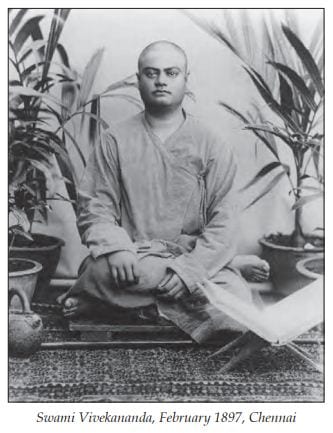
First, the principle, ‘Education is the manifestation of the perfection already in man,’ is not a philosophical principle in the Western sense, where philosophy is a result of the disciplined thinking of an intelligent but otherwise ordinary mind. Rather it is an experiential fact to the illumined mind. Admittedly, it isn’t the direct experience of most people, but it is a profound truth realised in the depths of spiritual experience. And it is realised to be true of everyone right now, even if we don’t know it. Moreover, though the principle is foreign to the thinking of ordinary people, it can be understood by ordinary people, because, again, it is the truth of our own being.
Second, to develop a pedagogical method from this principle, we still need the experience of how children learn in order to apply it. The principle can’t be applied in the abstract: it has to be applied to actual children in a learning environment, which requires knowledge of actual children and how they learn, the same as with Piaget or any modern educationist.
Neither do we need to reinvent the wheel. As Swami Vivekananda often said, man doesn’t move from error to truth, but from truth to truth. It’s not that every idea that has gone before us is wrong, and now we are coming with the truth. No, we have a core truth, an experiential truth, but we then make use of the experience of other educationists to form a harmonious model of pedagogy. Yes, all knowledge is already within; but children still follow a developmental pattern, and there are the truths that Piaget and many others have discovered.
Let us now sketch out a very brief outline for what such a pedagogical method might look like, using Swamiji’s core definition plus some of his supportive ideas. Here, in this short article, we must limit ourselves simply to pointing in a general direction; but in time this is to be worked out in detail with the help of classroom experience and the accumulated wisdom from the field of education.
First, let us begin by expanding the core definition: ‘Education is the manifestation of the perfection already within.’
The common-sense understanding is that education is the transfer of useful information from external reservoirs of knowledge, such as books and experts, into the minds of students, so that they become well-functioning members of society who know how to navigate their way through life.
The common-sense view, in other words, holds that knowledge is outside, and must be transferred into the person.
Swamiji’s view, based on the direct perception of the Self of man, is just the opposite. All knowledge is already within. ‘Teaching’ makes that knowledge manifest, conscious; it doesn’t ‘put something in’. Swamiji himself explains the essence of it through the example already referenced, of Newton and the apple. The idea of gravitation was not in the apple or in the earth to which it fell. Suddenly Newton saw a new relationship of ideas within his own consciousness which explained the phenomenon outside.
We have all had similar experiences, what are popularly called ‘light bulb’ moments, when suddenly we understand something that we had previously been unable to understand, as if a mental light bulb had been switched on. There’s a sudden flash of understanding, and we see how things fit together, whether it is a mathematical problem or how to cook a new dish. Most learning is more gradual, without sudden flashes of insight; but the process is the same. This is true even in learning a language. The language isn’t put into our heads from outside: rather the linguistic structures in our mind are stimulated in a new way until we begin to ‘get it’; we learn to express ourselves and to understand others through new linguistic patterns in the mind, the potential for which was already there. Had there been no capacity for language latent within us, no amount of exposure would teach us anything.
And according to both Swami Vivekananda and the ancient Sanskrit grammarians, that capacity for language is not just a physical feature of the brain—a part of its wiring, as Noam Chomsky and other linguists have postulated—but is a manifestation of consciousness itself, at the root of mentality: thought is linguistic. Therefore, Swamiji said, he was convinced that even the babbling of a baby was an effort to express the highest truth.
The Swami explains the same idea from a different angle in Karma Yoga. He defines work thus: ‘Like fire in a piece of flint, knowledge exists in the mind; suggestion is the friction which brings it out. . . Every mental and physical blow that is given to the soul, by which, as it were, fire is struck from it, and by which its own power and knowledge are discovered, is karma, this word being used in its widest sense.’2
That is it. That is how we learn. Karma Yoga is not primarily about doing things: it is the great yoga of experimentation with reality—not primarily experimentation with the mind, which is Raja Yoga, not primarily experimentation with the sense of self, which is Jnana Yoga, not primarily experimentation with the Object of Love, which is Bhakti Yoga—but experimentation with experiential Reality itself at all levels, from the workings of matter to the highest consciousness. And that is the process of learning.
The baby begins life by discovering the world: learning to recognize patterns, putting everything in its mouth—including its own hands and feet—to experience it, finding out where its body ends and the environment begins, discovering that some things hurt and others feel good, eventually learning that others smile when it smiles, that others laugh when it laughs, that others make faces when it makes faces. But the learning is all within. The external is only a stimulus used by the mind for its own understanding. The baby, then, is a natural-born karma yogin.
This has to be deeply understood first. Then we can begin to see how to teach on this basis. Education shouldn’t mean stuffing the mind with information: Swamiji spoke repeatedly against the harm of such learning. Education is a process of discovery where the external world is used as a stimulus for bringing out the understanding which exists within us.
Going further with Swamiji’s definition of work, education is not just discovery, but also an awakening: it awakens us to who we are, what the world is, what our relationship to the world is, and what is of value. Awakening is the result of discovery. History, for instance, should not be taught as a list of dates and names and pre-packaged understanding of historical happenings. History is the study of how we got to where we are now, so that we see a direction, and can look from that basis into the future; we don’t know who we are if we don’t know where we have come from, and how. History explains the present, and its study gives the present its proper context and depth. Yes, that’s an abstract way of putting it, but it can be put in terms understandable to children.
Swami Vivekananda once said that ‘if I had to do my education once again, I would not study facts at all. I would develop the power of concentration and detachment, and then with a perfect instrument, collect facts at will.’3 This follows from his definition of education. If knowledge is already within, the central task of the educator is to teach the child—in age-appropriate ways—how to call out that inner understanding, through control of the mind and senses.
Children are naturally inquisitive, and this inquisitiveness must be stimulated, not punished or thwarted. Swami Vivekananda said that we should never use fear to control children. No, encourage their natural inquisitiveness; their natural desire to experiment by playing with things and, later, with ideas; their natural tendency to take things apart to see how they work. We shouldn’t provide answers so much as provide positive challenges. Obviously, learning does also include the acquisition of information, but that should not be the focus: that, as far as is practicable, should follow from the process of discovery. As Swamiji said, if the child’s mind is properly trained, it will then be able to acquire whatever information is needed far more easily and quickly.
If education is a process of discovery and awakening, then an important aspect is teaching students how to ask questions, not giving them answers to memorise; and then they must be taught the skill sets necessary to pursue their questions. One of the amazing features of the Upanishads is the exquisite beauty and profundity of the questions asked, like ‘What is that, by knowing which everything here becomes known?’4 And, ‘Willed by whom is this mind directed towards its objects?’5 How wonderful must have been the education in Vedic times, that students could ask such questions—questions which the modern world with all its learning cannot even formulate! So children must be taught how to query, and then how to pursue their queries.
But that doesn’t mean that the development of memory has no place. Unfortunately, even in India nowadays one hears students ask, ‘Why should I memorise anything when I can look up all I need to know in seconds on the Internet, through my mobile?’ No, the power of memory is extremely important, because it trains the mind to store and retrieve information; and if the mind has been properly trained, it will also categorise and relate the information. What we have properly memorised becomes a part of us in a way that information stored on the Internet does not. Memorising worthwhile texts integrates those texts into our thinking. And the retentive power developed through proper memorising develops the power of sustained thinking, the power to hold a train of thought, which modern students in East and West have largely lost.
Let us draw to a close by recognising here that children are naturally idealistic, and that natural idealism must be stimulated and fostered. Character-building is the most important part of education, in Swamiji’s view. All else should have that aim. There is much talk nowadays in India about value education. That’s good, and the experience now being garnered in teaching value education will be useful in a new pedagogical model. But it has to form an integral part of the educational experience itself, not be just an add-on. It must be the aim of every educational process. And for that, living exemplars are needed. The teacher must be seen not as the conveyor of information, nor as the dispenser of discipline, but as the flame that lights other flames.
Until recently it was generally understood in societies around the world that there is an intangible part of experience which can’t be expressed as objective information. Therefore elders in the family and society were respected, as they held the ‘wisdom’ component of experience that could be communicated only person to person, not book to person or video to person. And so Swamiji wanted the gurukula system to be reinstated, in a form suitable to modern life.
To institute these ideas in a modern secular state is not easy—not because there is something inherent about secularism that militates against it, but because, if government funds are received, then government control is expected; and a modern secular government can’t be expected to experiment with Swami Vivekananda’s revolutionary ideas. Therefore it will be easiest if these ideas are first tried and matured in small private schools that don’t depend upon government funding. ‘Private’ shouldn’t mean ‘exclusive’, meant only for rich kids. Starting small is ideal, so that it is dependent neither on the government nor on rich parents. If it succeeds, then it can spread, and the government itself will recognise its value. But we must make a start.
The author wishes to express his indebtedness to Swami Anuragananda, present Secretary in charge of the Ramakrishna Mission, Cherrapunji. It was he who first made the author aware of the need to develop a practical pedagogical method out of Swami Vivekananda’s definition of education, and who pointed to Piaget as an illustration.
References
- The Complete Works of Swami Vivekananda, Kolkata: Advaita Ashrama, Mayavati Memorial Edition, 1989, 4.358. (hereafter, CW)
- CW. 1.29
- CW. 6.39
- Mundaka Upanishad. 1.1.3
- Kena Upanishad. 1.1
Source : Vedanta Kesari, December, 2016


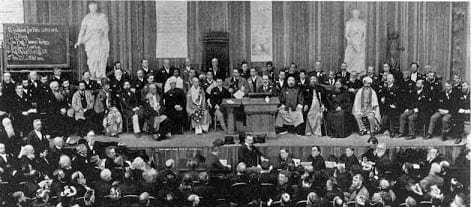

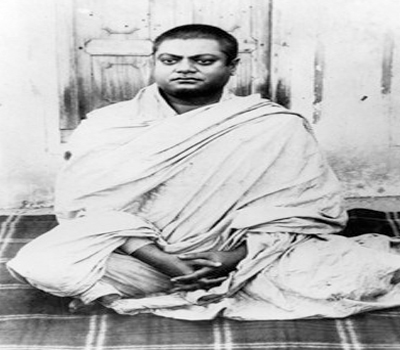
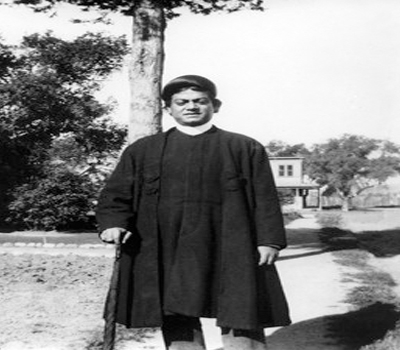
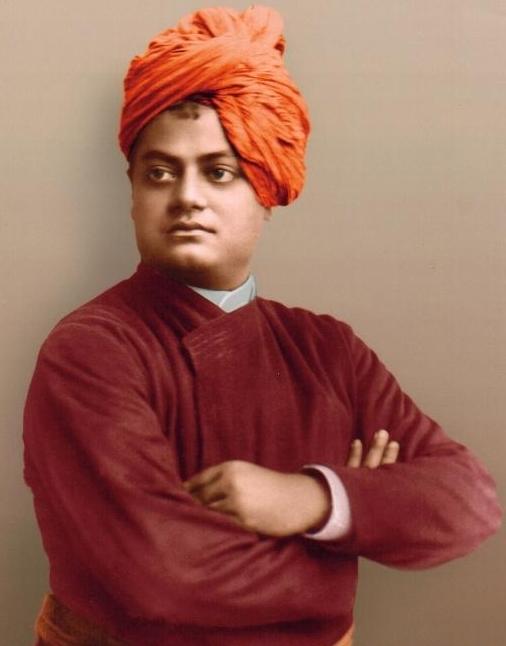
Leave A Comment